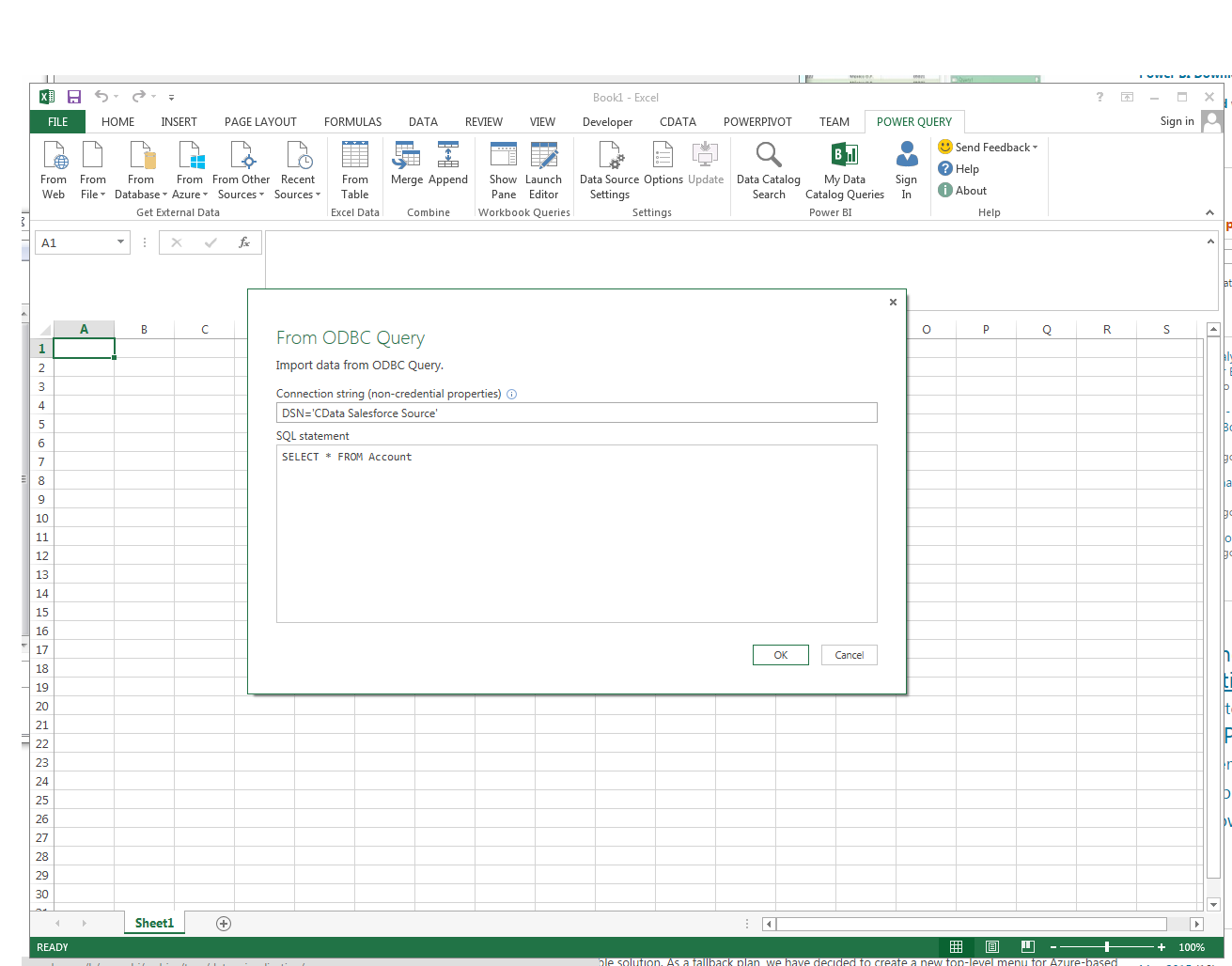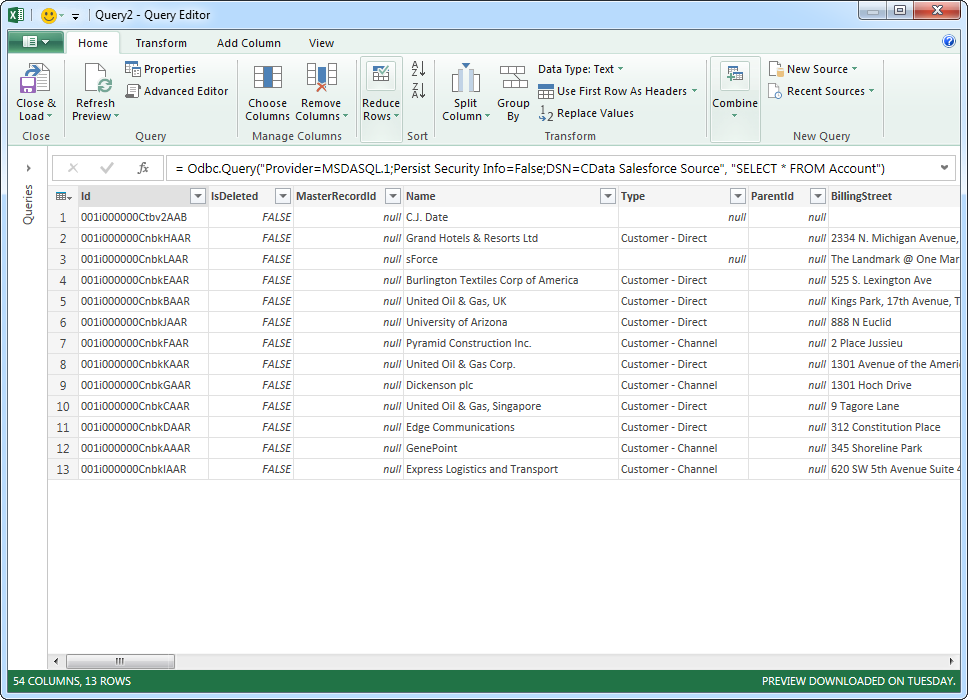Model Context Protocol (MCP) finally gives AI models a way to access the business data needed to make them really useful at work. CData MCP Servers have the depth and performance to make sure AI has access to all of the answers.
Try them now for free →Use the CData ODBC Driver for Oracle Eloqua in Microsoft Power Query
You can use the CData Oracle Eloqua ODBC Driver with Microsoft Power Query. In this article, you will use the ODBC driver to import Oracle Eloqua data into Microsoft Power Query.
The CData ODBC Driver for Oracle Eloqua enables you to link to Oracle Eloqua data in Microsoft Power Query, ensuring that you see any updates. This article details how to use the ODBC driver to import Oracle Eloqua data into Microsoft Power Query.
Connect to Oracle Eloqua as an ODBC Data Source
If you have not already, first specify connection properties in an ODBC DSN (data source name). This is the last step of the driver installation. You can use the Microsoft ODBC Data Source Administrator to create and configure ODBC DSNs.
There are two authentication methods available for connecting to Oracle Eloqua: Login and OAuth. The Login method requires you to have the Company, User, and Password of the user.
If you do not have access to the username and password or do not wish to require them, you can use OAuth authentication. OAuth is better suited for allowing other users to access their own data. Using login credentials is better suited for accessing your own data.
Import Oracle Eloqua Data
Follow the steps below to import Oracle Eloqua data using standard SQL:
-
From the ribbon in Excel, click Power Query -> From Other Data Sources -> From ODBC.
- Enter the ODBC connection string. Below is a connection string using the default DSN created when you install the driver:
Provider=MSDASQL.1;Persist Security Info=False;DSN=CData OracleEloqua Source -
Enter the SELECT statement to import data with. For example:
SELECT Name, ActualCost FROM Campaign![The ODBC connection string and SELECT query. (Salesforce is shown.)]()
Enter credentials, if required, and click Connect. The results of the query are displayed in the Query Editor Preview. You can combine queries from other data sources or refine the data with Power Query formulas. To load the query to the worksheet, click the Close and Load button.
![Tables loaded in Power Query. (Salesforce is shown.)]()



